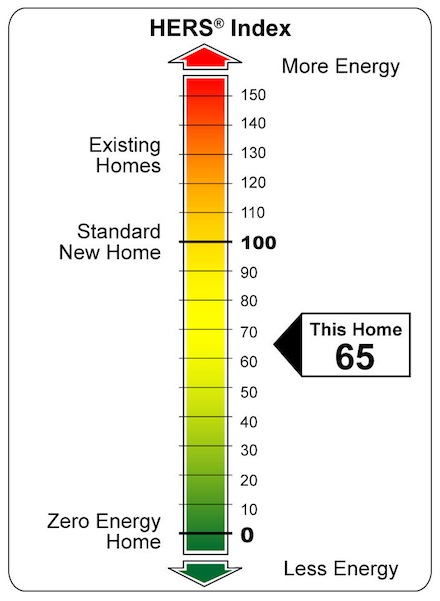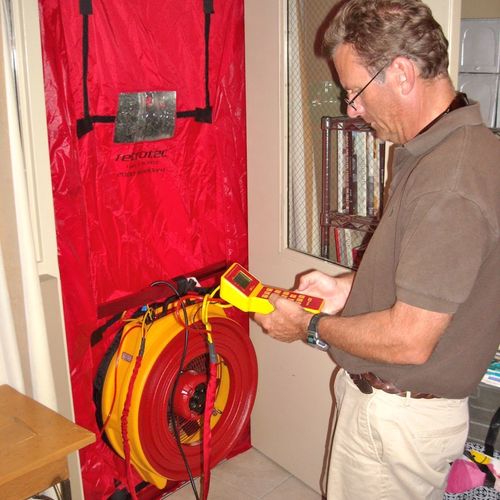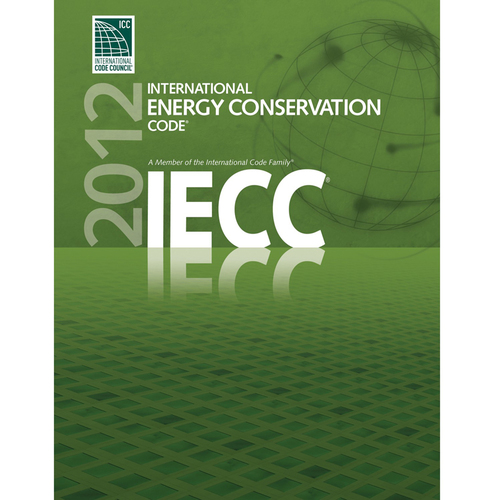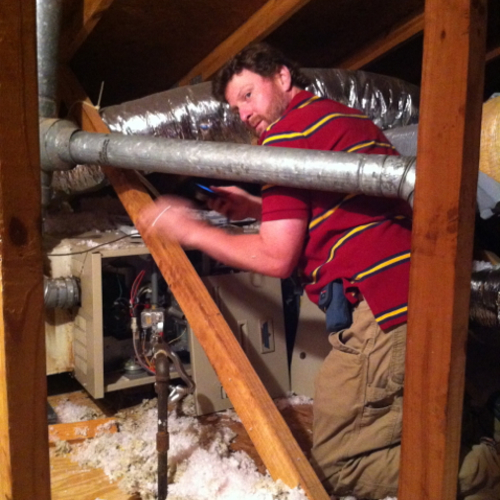
Image Credit: Energy Vanguard
The HERS Index is a number that gives you a measure of how energy-efficient a home is. We can debate how relevant that number is or how accurate is the energy model it’s based on, but the fact is that it’s being used.
The 2015 International Energy Conservation Code (IECC) includes a compliance path based on the HERS Index, which they call the Energy Rating Index (ERI). Here in my state, Georgia Power has been educating home buyers on the HERS Index since they created their EarthCents program a couple of years ago. But the HERS Index is based on the 2006 IECC. Is that a problem?
The HERS Index calculation
A while back I wrote an article on the calculations behind the HERS Index, and I showed the equation that appears at the end of this paragraph. The important concept contained in that equation is the HERS reference home. What the calculation is doing is comparing the energy use of the home being rated to the energy use of the HERS reference home. The rated home has whatever insulation levels, airtightness, and other efficiency parameters the HERS rater enters (which, unfortunately, aren’t always what’s in the home). The reference home is set up to meet the energy efficiency requirements of the 2006 IECC.

The result is that if the number comes out to be exactly 100 (for a home with no onsite power production and a PEfrac of 1), that means, roughly, that it would meet the 2006 energy code.
Shouldn’t we update the HERS Reference Home?
But wait! The energy code is updated every three years. Since 2006, we’ve had the 2009 IECC, the 2012 IECC, and now the 2015 IECC. Shouldn’t we update the reference home to use the most recent version of the energy code?
No. If we did update the reference home every time the code changed, we wouldn’t be able to compare the HERS Index of one home to that of a home using a different energy code. And the whole purpose of the HERS Index is to allow us to compare one home to another.
Let me give you an example. We measure weight with respect to the Earth’s gravitational pull, but let’s say Congress passed a bill requiring that everyone born on or after 1 January 2015 had to be weighed according to a pound based on the Moon’s gravity. And those born in 2018 or later would have weights based on the gravity of Venus. In 2021, we’d switch again to pounds based on Jupiter’s gravity.
I weigh 190 pounds. Someone born between 2015 and 2018 who weighed the same (that would be one huge baby!) would be 31.5 pounds. My weight twin born between 2018 and 2021 would weigh 172 pounds, and after 2021 they would 481 pounds.
As you can see, it would be a complete mess and no one would be able to compare weights easily because of all the different references for the pound.
One thing does change
By keeping the reference home’s energy code set to the 2006 IECC, we can keep comparing the HERS Indices of different homes, but one thing does change: the HERS Index of a home that meets the current code.
A new home meeting the 2006 energy code would have a HERS Index of 100. That’s shown in the scale above where it marks 100 as the Index of a “Standard New Home.” A new home meeting more recent codes would be lower. In Georgia, we’re on the 2009 IECC, and a typical new home just meeting the code would have a HERS Index of about 92. The 2012 and 2015 codes bring it down into the 80s.
So there you have it. Despite the fact that energy codes have improved since 2006, we don’t want to mess with the HERS Reference Home.
Allison Bailes of Decatur, Georgia, is a speaker, writer, energy consultant, RESNET-certified trainer, and the author of the Energy Vanguard Blog. Check out his in-depth course, Mastering Building Science at Heatspring Learning Institute, and follow him on Twitter at @EnergyVanguard.
Weekly Newsletter
Get building science and energy efficiency advice, plus special offers, in your inbox.















One Comment
The great thing about standards
The great thing about standards is...
... that there are so many of them! :-)
Defining a foot as the length of the king's foot wasn't exactly a stable standard, for much of the same reasons that redefining HERS every time the codes were updated would make it unworkable.
Log in or create an account to post a comment.
Sign up Log in